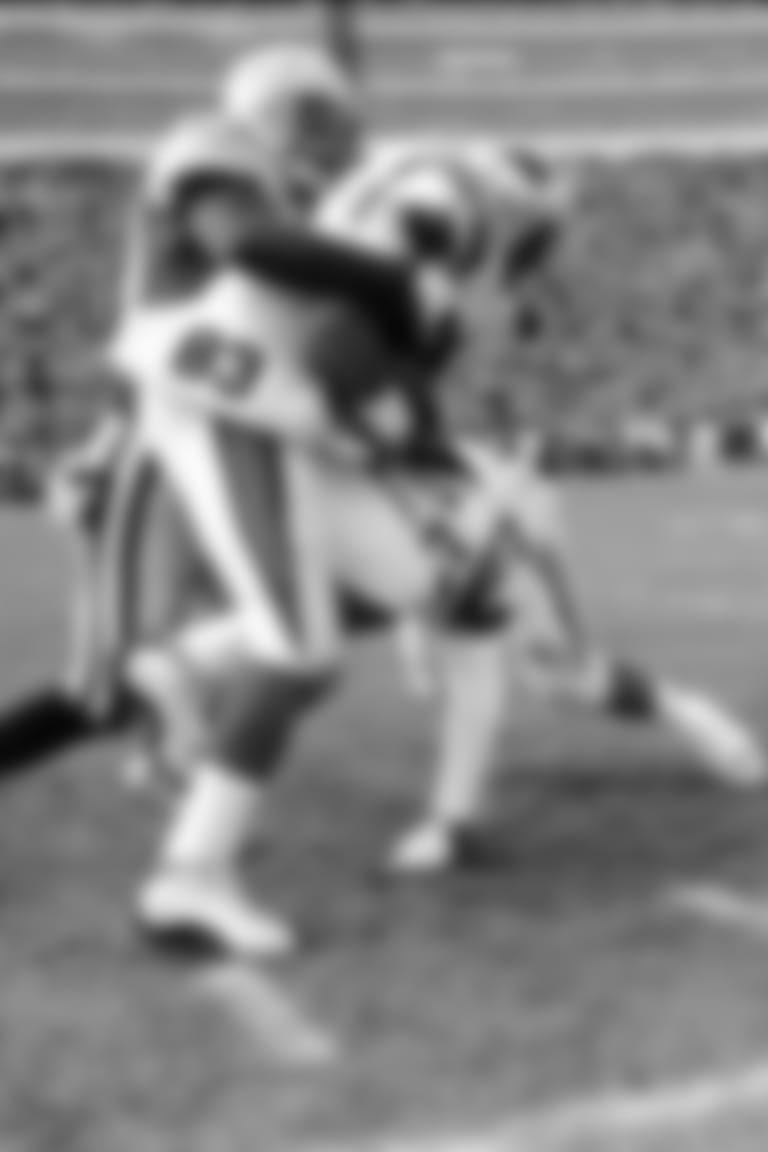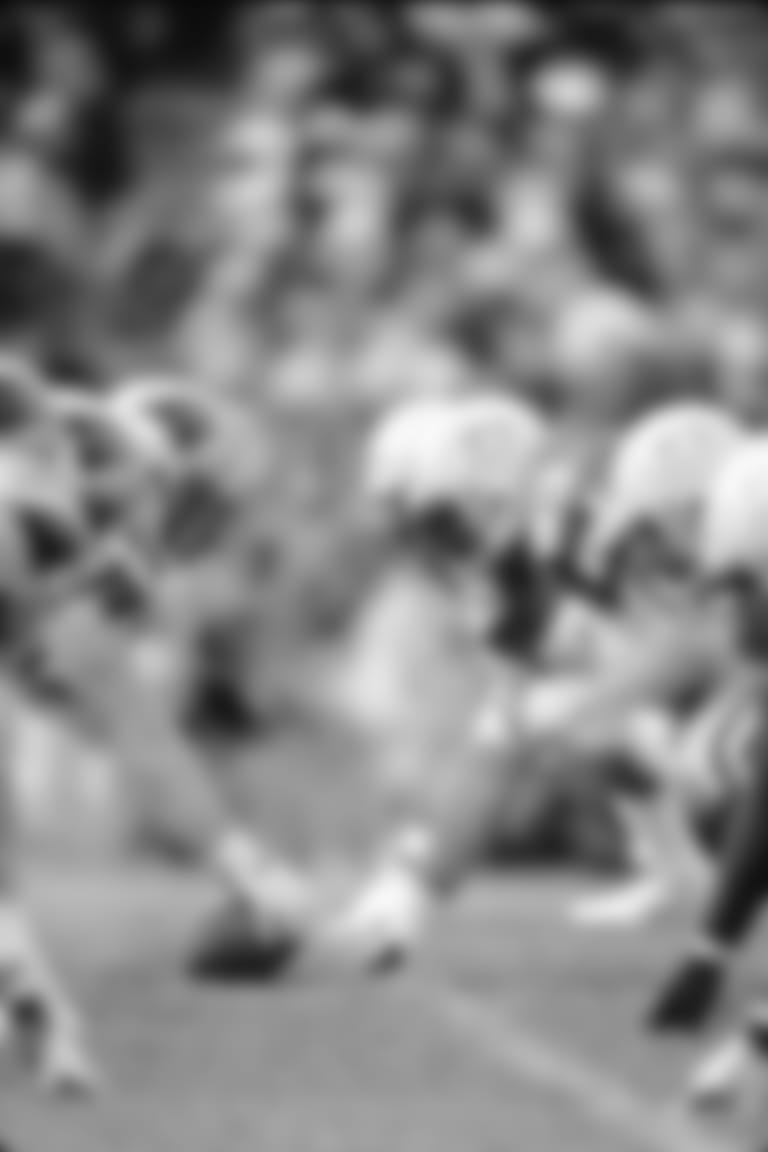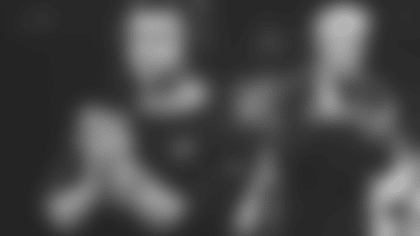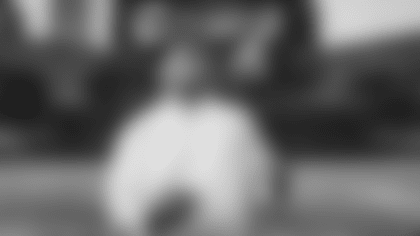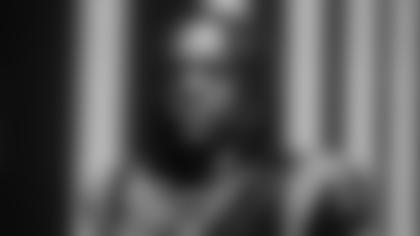As the person responsible for making sure the Panthers have the correct gear to play in any conditions, equipment manager Don Toner always keeps an eye on the weather. So when he realized it might only dip into the mid-20s Saturday night in Green Bay, he was almost sad. Or maybe disappointed. For others, if not himself.
"I mean, if you're really going to experience Lambeau Field, you almost want it to be cold," Toner, an obvious masochist, said.
As ridiculous as looking at the mid-20s and thinking, "Hmm, not bad," may be, the reality is it can always get worse.
And at least this way, he doesn't have to worry about packing extra cayenne pepper or how to get rid of all those broomball shoes that no one ever wore, or returning well-intentioned gear to the hospital that proved to be not worth the freight.
The Panthers have gotten the full Green Bay experience before, when the franchise had little of its own. This week, it's just a game against the Packers near the end of a rebuilding season. The first time Toner went there with the Panthers, the conditions were as different as the stakes.
After the franchise's second season, the Panthers surprised everyone by advancing to the NFC Championship Game. They exceeded everyone's expectations, until the cold, hard reality of facing Brett Favre and the heavily-favored Packers smacked them in the face in a 30-13 game that wasn't nearly that close.
But even before Favre and the Packers could, Green Bay did.
That game was the coldest in Panthers’ history, such as it is (anything at freezing or below gets you in the top 10).
"It really was like another planet, but it didn't bother the Packers guys at all," Panthers security guard Ricky Robbins said, recalling his spot on the sidelines near coach Dom Capers. "It got to a certain point where all movement basically stopped, and moving was the only thing that was going to keep you warm."
| Temperature | Date | Location | Result |
|---|---|---|---|
| 3 | 1/12/97 | Lambeau Field, Green Bay, Wisc. | Packers 30 Panthers 13 |
| 12 | 11/30/14 | TCF Bank Stadium, Minneapolis, Minn. | Vikings 31 Panthers 13 |
| 25 | 12/1/02 | Cleveland Browns Stadium, Cleveland, Ohio | Panthers 13 Browns 6 |
| 27 | 12/23/10 | Heinz Field, Pittsburgh, Pa. | Steelers 27 Panthers 3 |
| 28 | 12/9/18 | FirstEnergy Stadium, Denver, Colo. | Browns 26 Panthers 20 |
| 28 | 11/9/97 | Mile High Stadium, Denver, Colo. | Broncos 34 Panthers 0 |
| 30 | 1/3/10 | Bank of America Stadium, Charlotte, N.C. | Panthers 23 Saints 10 |
| 30 | 12/10/00 | Arrowhead Stadium, Kansas City, Mo. | Chiefs 15 Panthers 14 |
| 32 | 12/19/16 | FedEx Field, Landover, Md. | Panthers 26 Redskins 15 |
| 32 | 12/4/06 | Lincoln Financial Field, Philadelphia, Pa. | Eagles 27 Panthers 24 |
| 32 | 12/26/99 | Three Rivers Stadium, Pittsburgh, Pa. | Steelers 30 Panthers 20 |
A DIFFERENT KIND OF COLD
Toner's a Buffalo guy, so any discussion of cold weather will always be conditional for him. But the NFC Championship Game after the 1996 season was a different kind of cold, and it became another advantage for the Packers that night. Not as much of an advantage as being better at football than the second-year Panthers, who were in over their heads in many ways, but it was definitely a factor.
"It was the coldest day in the history of the world," Panthers executive director of football staff Mark Carrier said.
He laughed afterward, but it was clear in the way he said it nearly 24 years later that it didn't qualify as hyperbole in the moment.
When they kicked off the afternoon of Jan. 12, 1997, it was a crisp 3 degrees Fahrenheit. Don't even get me started about Celsius, that just makes it feel colder, and no one needed any help with that on that day.



